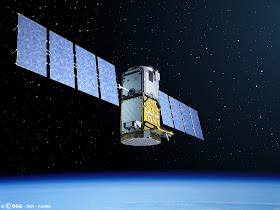SolarImpulse - Destination Morocco patch.
July 7, 2012
It’s been a long but exciting flight with a number of stimulating events that have kept all of us on our toes, but Bertrand Piccard landed the Solar Impulse prototype safely in Madrid-Barajas’s airport at 11:19 PM (UTC), on Friday 6 July.
Rabat to Madrid – Landing in Madrid-Barajas Airport
One of the flight’s singularities was that Bertrand went from beating HB-SIA’s record ground speed, 157km/h, to gaining its fastest reverse speed at 18km/h! I couldn’t help but smile when I thought of one of André’s comments after the first attempted flight to Ouarzazate: “Maybe we should install a couple of rearview mirrors what’s going on in the back!” It wouldn’t have been absolutely necessary this time as Bertrand was offered a splendid view of the sunset over the horizon. In fact, although Bertrand was navigating eastward, the nose of the aircraft was actually pointing westward in direction of the spectacular view. We might even start speculating he did it on purpose to better seize the moment...
To better understand the difficulties Solar Impulse is faced with when there are headwinds and crosswinds, here are a couple of descriptions:
Groundspeed: can be defined as the speed of the aircraft relatively to the ground.
True airspeed: the speed of the aircraft in relation to the air mass it’s flying through.
To make it clearer, let’s take the following example: an airplane flies at 50 km/h with no wind. In this case, the groundspeed and true airspeed are equal to the speed of flight. Let’s suppose now that there are headwinds at 20 km/h and the pilot maintains the speed at 50 km/h, in the given air mass. From the cockpit it will seem as though he’s cruising at 50 km/h while his groundspeed will be, in actuality, only 30 km/h. So in Bertrand’s case, a groundspeed of 157km/h* was aided by an agreeable tailwind while the reverse speed was obviously caused by particularly stubborn headwinds.
Rabat to Madrid – Bertrand Piccard and André Borschberg after landing
It’s been a particularly important flight for the Solar Impulse engineers and technicians as it has once again proven this experimental aircraft’s reliability and energy savings efficiency through never before experienced winds, often faster than the speed of the aircraft.
Madrid is the first and last stop in Europe before HB-SIA and the Solar Impulse team returns home to the lovely landscapes of the Swiss Alps.
*I’ve used km/h in this exercise, but the common speed measure in aviation is knots (kts).
Flight Report: Rabat - Madrid
Pilot: Bertrand Piccard
Take-off time: 06/07/2012 05:17 AM UTC
Time of landing: 06/07/2012 11:19 PM UTC
Flight duration: 17h 3min
Average speed: 60 km/h
Average altitude: 4'879 metres
Distance: 898 km
For more information about SolarImpulse, visit: http://solarimpulse.com/
Images, Text, Credits: Solar Impulse / Jean Revillard.
Greetings, Orbiter.ch


















































